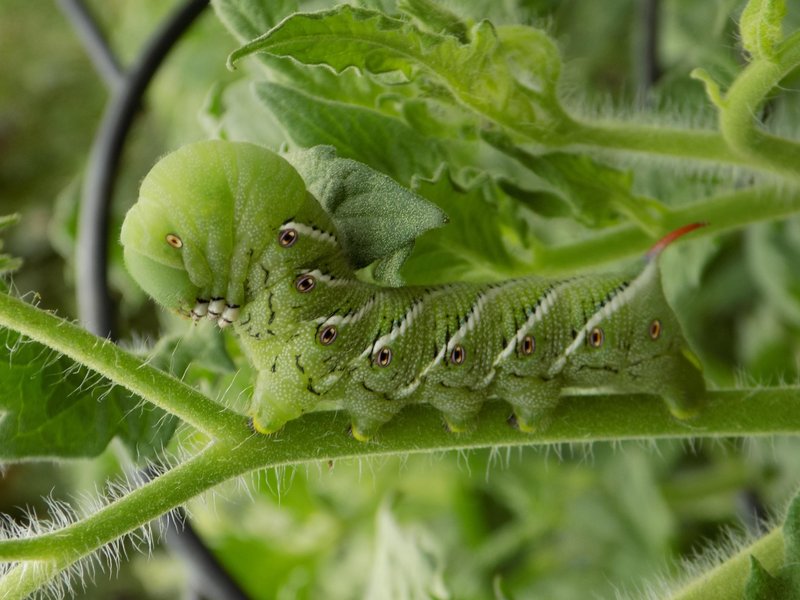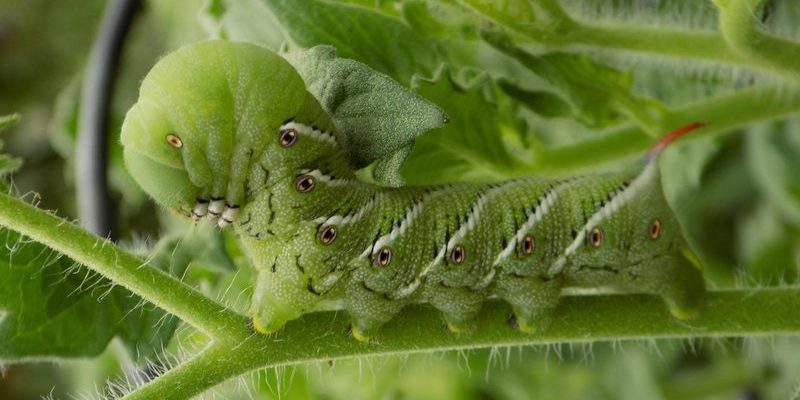
So, why use hornworms in your entomology class? It’s simple! They provide hands-on learning experiences that can make complex concepts much more relatable. Instead of reading about life cycles or metamorphosis, students can observe it first-hand. This interactive approach not only keeps students engaged but also fosters a deeper understanding of biology. Let’s dive into how hornworms can transform your entomology classes into vibrant, educational experiences.
What Are Hornworms?
Hornworms are the larval stage of certain moths, primarily the tobacco hornworm and the tomato hornworm. These caterpillars are named for the small horn-like projections on their rear ends, which can make them look a bit intimidating, but don’t worry—they’re perfectly harmless!
In their natural habitat, hornworms feed on the leaves of specific plants, particularly nightshades like tomatoes and tobacco. This makes them not only fascinating to observe but also a great way to discuss plant-insect relationships. Plus, their distinctive green color and size—often reaching up to 4 inches—make them highly visible and engaging for students.
Here’s the thing: hornworms undergo a remarkable transformation through **metamorphosis**. They start as eggs, hatch into caterpillars, and eventually pupate into moths. By observing this life cycle, students can better grasp topics like developmental biology and the importance of biodiversity.
Why Use Hornworms in Class?
Hornworms can be a fantastic addition to your entomology curriculum for a variety of reasons. First, they provide a tactile learning experience. Students can actually hold, feed, and observe the hornworms, which makes the learning process much more engaging compared to textbook illustrations.
Moreover, these creatures can spark curiosity and encourage questions. For example, students might wonder why hornworms are green or how they protect themselves from predators. These inquiries pave the way for discussions about adaptation, evolution, and ecological balance.
Additionally, since hornworms are relatively easy to care for, they make a great choice for classroom projects. You can set up a small habitat with a few plants, and students can take turns monitoring their growth and feeding habits. This hands-on experience emphasizes responsibility and teamwork.
How to Care for Hornworms in the Classroom
Caring for hornworms in the classroom can be an exciting project. Here’s a simple guide to get you started:
- Habitat: Use a container with a secure lid, but ensure it has adequate ventilation. A 10-gallon aquarium works well. Just add some soil and plant leaves (like tomato or tobacco) for them to munch on.
- Feeding: Hornworms prefer fresh leaves. Make sure to replace them daily. You want them well-fed so they can grow and demonstrate their life cycle!
- Temperature: Keep them in a warm, well-lit area but avoid direct sunlight. A room temperature of about 70-80°F (21-27°C) works best.
- Cleanliness: Regularly clean the habitat to prevent mold and bacteria. It’s also a great opportunity to teach students about hygiene in biology labs!
By creating a nurturing environment, students will have the opportunity to observe each stage of the hornworm’s life cycle, fostering a real connection with the natural world.
Learning Outcomes from Hornworm Observation
Using hornworms in your entomology class can drive home key learning outcomes. Here’s what students can take away from this experience:
1. **Understanding Life Cycles:** Observing hornworms as they transition from larva to pupa to adult moth provides a clear illustration of the concept of metamorphosis. Students can document each stage, which reinforces learning through hands-on experience.
2. **Ecological Roles:** Hornworms can lead to discussions about their role in ecosystems, such as being prey for birds and other animals. Understanding these interactions can enhance students’ ecological literacy.
3. **Adaptation and Survival:** Students can explore how hornworms use camouflage to survive from predators. Discussing various adaptations can inspire deeper thoughts on evolution and biodiversity.
4. **Data Collection Skills:** Students can be encouraged to take notes on the hornworm’s growth, behavior, and feeding patterns. This cultivates valuable skills in observation and data analysis, which can be applied in future scientific studies.
By engaging with hornworms, students don’t just learn about insects; they gain critical thinking skills that are essential in any scientific discipline.
Safety and Ethical Considerations
While hornworms are generally safe to handle, it’s important to discuss ethical considerations when working with live animals in the classroom. Here are some points to keep in mind:
– **Handling:** Teach students how to handle hornworms gently. They should never be squeezed or dropped. This instills a sense of respect for living creatures.
– **Release Policy:** After studying them for a while, consider releasing the hornworms back into their natural habitat. This practice not only teaches students about responsibility but also emphasizes conservation.
– **Disease Awareness:** Make students aware that any living organism can carry diseases. Cleaning hands after handling and maintaining a clean habitat is crucial for their safety and the hornworms’ well-being.
By weaving these lessons into your curriculum, you’re not just teaching about entomology; you’re fostering a new generation of conscientious, curious scientists.
Alternatives to Hornworms
While hornworms are an excellent choice for classroom learning, you might be considering other options. Here are a few alternatives that can be just as engaging:
- Mealworms: These beetle larvae are easy to care for and can be used to teach about metamorphosis, like hornworms. Plus, they’re readily available in pet stores!
- Butterflies: Raising caterpillars like monarchs can be rewarding, too. Their colorful life cycle can captivate students, and they also play an important role in pollination.
- Aquatic Insects: Studying insects like water beetles or dragonflies can introduce students to diverse ecosystems and habitats, expanding their understanding of entomology beyond terrestrial insects.
Each option brings something unique to the classroom, so consider which best aligns with your educational goals and the interests of your students.
Using hornworms in entomology classes opens up a world of exploration and discovery. From their fascinating life cycle to their ecological importance, these little creatures serve as engaging teaching tools that bring classroom concepts to life. Plus, the hands-on experience makes learning fun and memorable.
Whether you choose to focus on their biology, ecological roles, or the ethical considerations of working with live organisms, hornworms can captivate your students’ imaginations. So, gather your materials, set up your habitat, and prepare for an exciting journey into the world of entomology! By nurturing curiosity and respect for living things, you’ll inspire the next generation of scientists, one hornworm at a time.

